Tamron 35-150 mm f/2-2.8 Di III VXD
4. Image resolution
Let's check how the results of the Tamron 35-150 mm f/2-2.8 Di III VXD compare here. A graph below presents its performance in the frame centre at 35, 70, 105, and 150 mm.
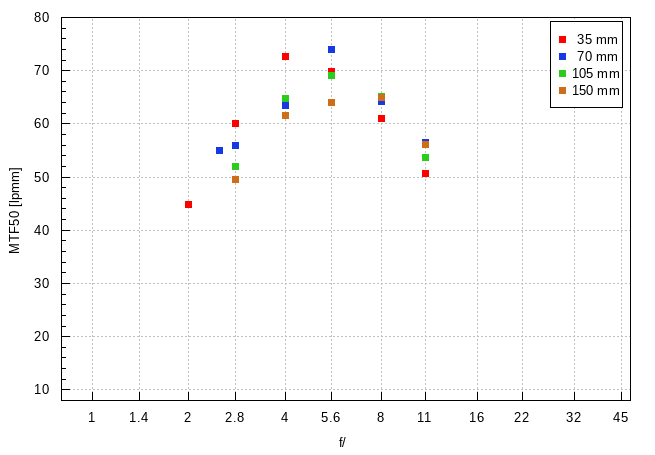
Attentive Readers of our website certainly will notice that the resolution graph in this case ends by the f/11 aperture even though officially the lens can be closed down to an aperture range from f/16 to f/22. Why? Resolution results we got in the f/16- f/22 range are non-physical. There were some cases when the resolution by f/20 or f/22 could be noticeably higher than by f/16 despite knowing diffraction limits. What's happened? Our hypothesis is such that the lens has a problem with a stronger closing of diaphragm blades. It's hard to say whether it is a mechanical flaw or e.g the closing down is done properly well for the optical system set at infinity but, at the same time, it lets in more light when the elements shift while focusing for a closer distance. To be honest an in-depth analysis of such a problem would take me a lot of time and I didn't want to do so, especially that this part of the aperture range is rather negligible. 99% of all photos shot with this lens will be done in a range from f/2.0 to f/11 and in that place our results weren't doubtful.
Please Support UsIf you enjoy our reviews and articles, and you want us to continue our work please, support our website by donating through PayPal. The funds are going to be used for paying our editorial team, renting servers, and equipping our testing studio; only that way we will be able to continue providing you interesting content for free. |
- - - - - - - - - - - - - - - - - - - - - - - - - - - - - - - - - - - - - - - - - - - - - - - -
At the maximum relative aperture the weakest results are observed at the 35 mm focal length where you see a level of almost 45 lpmm. Still it's worth noticing that it's still safely above our decency level so you shouldn't complain too much. Especially that at the wide angle the lens is also the fastest so there is a lot of room for improving the performance before diffraction starts its limiting influence. As a result resolution increases on stopping down the aperture and by f/2.8 it reaches an already good level of 60 lpmm and by f/4.0 it brushes against a very good level of 73 lpmm.
You can say the best things about the 70 mm focal length. Here you deal with a good level, amounting to exactly 55 lpmm, already at the maximum relative aperture and at the same time in this case you deal with the highest resolution value we observed in our test, almost 74 lpmm by f/5.6.
Moving towards higher focal length you deal with a successive worsening of the performance – but this effect is not especially pronounced. At 105 mm and by f/2.8 you deal with a still good result of almost 52 lpmm and maximum MTF values reach almost 70 lpmm at that place. At the maximum focal length and maximum aperture you operate around near 50 lpmm and maximum results, of about 65 lpmm are achieved near f/5.6 and f/8.0
Despite a combination of a high zoom ratio and very good aperture Tamron managed to avoid slip-ups. It is crucial because nobody expects resolution records and the main task of optics constructors is guaranteeing good image quality across the whole focal range and the main apertures. In this case you can say they succeeded.
In constructions of this type many problems become visible only on the edge of the frame so let's check now the edge of the APS-C sensor.
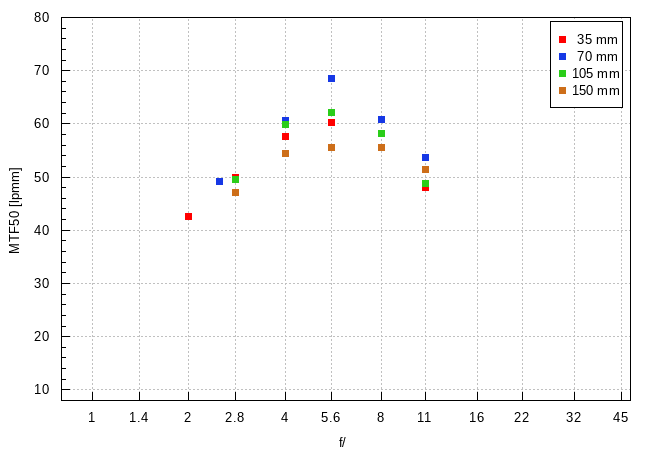
When it comes to overall performance once again the 70 mm focal length fares the best and the 150 mm is the weakest. The lowest result is reached at a combination of 35 mm focal length and f/2.0 aperture but even there you deal with a value of almost 43 lpmm so images remain useful. In this place the tested Tamron shows no weak points.
How the situation changes after passing to the most demanding edge of full frame? Let's find out.
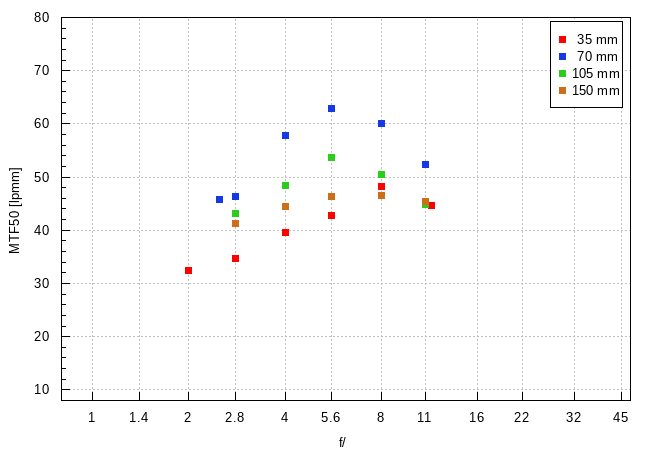
In this case discrepancies between particular focal lengths are noticeably more pronounced. The 70 mm focal length is definitely more at the front and the performance at this point can be described as very good. The 105 mm focal length is distinctly lower but in its case even the maximum relative aperture remains fully useful so there are definitely no reasons to complain. Most of problems you notice at both ends of the focal range, with the shortest focal length being the weakest – it needs stopping down to near f/4.0 in order to achieve a useful image quality. The maximum performance also remains rather mediocre, hovering around 48 lpmm. The 150 mm focal length fares a tad better, with a more or less useful maximum relative aperture, but the maximum results are the weakest of all, reaching just 46-47 lpmm.
The summary of this chapter has to be positive. Such an original construction should at least guarantee a very good performance in the frame centre – that's an absolute minimum and the Tamron manages to do so. Lack of any problems on the edge of the APS-C sensor is an additional asset. At the same time it would be difficult to expect that there would be no compromises at all – and they can be spotted near the maximum relative aperture on the very edge of the frame at 35 mm. This one weaker point, however, cannot change our overall assessment of the resolution performance of this lens which remains very good.
At the end of this chapter, traditionally, we present crops taken from photos of our resolution test chart. These photos were saved as JPEG files alongside RAW files used for the analysis above.
| A7R IIIa, JPEG, 35 mm, f/2.0 |
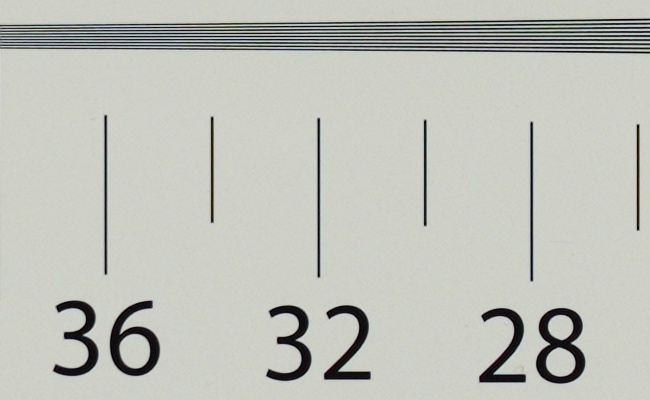 |
| A7R IIIa, JPEG, 70 mm, f/5.6 |
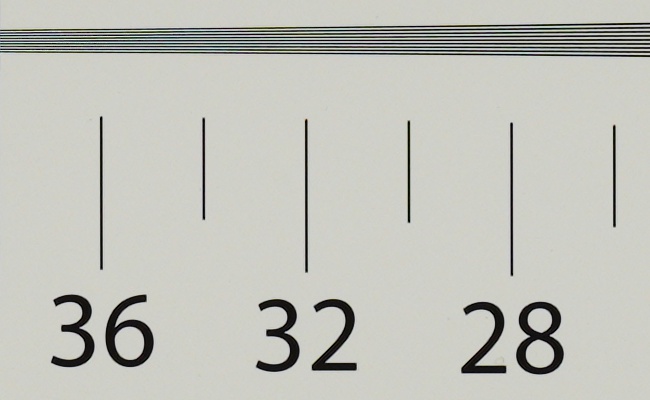 |






